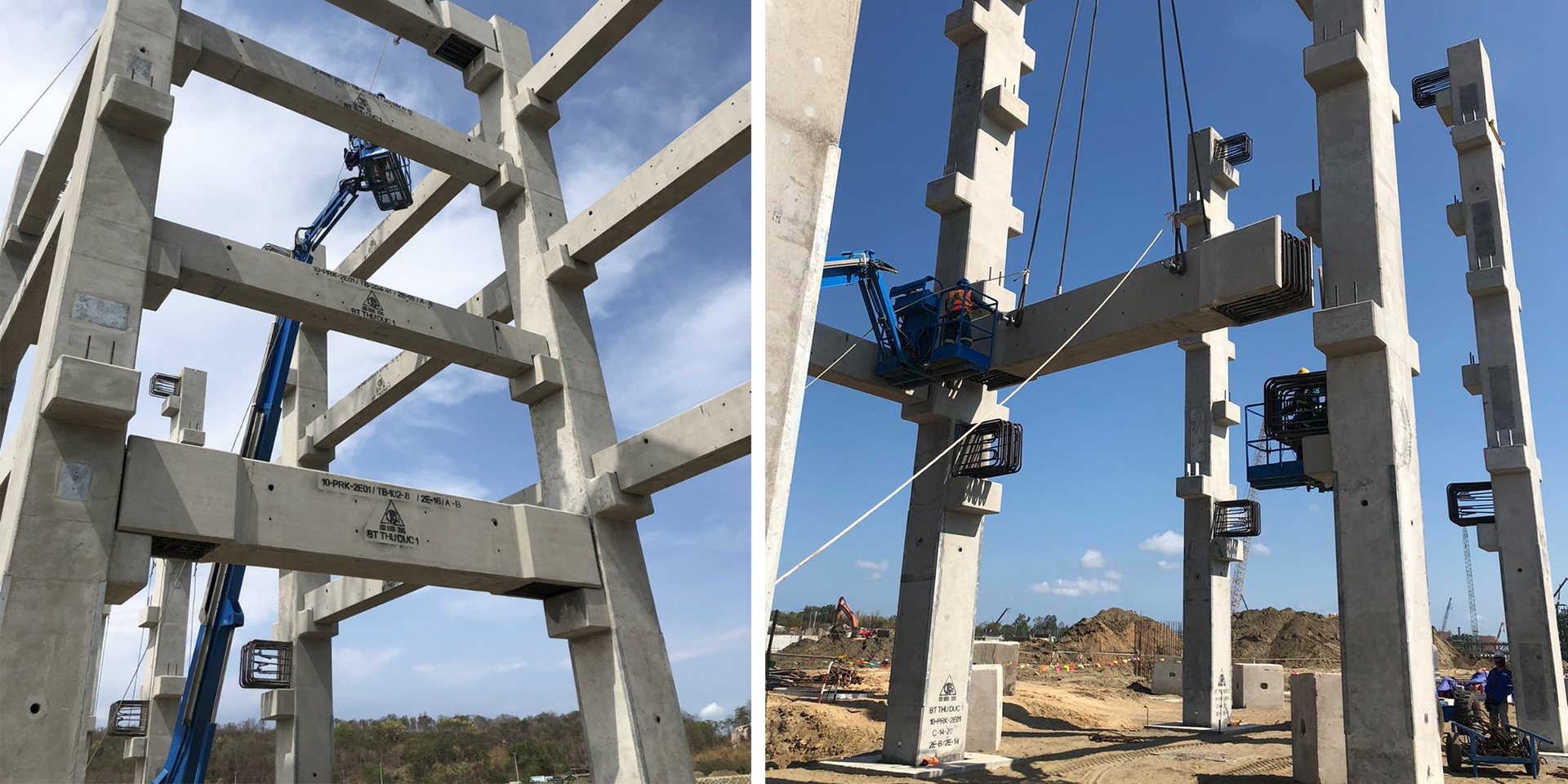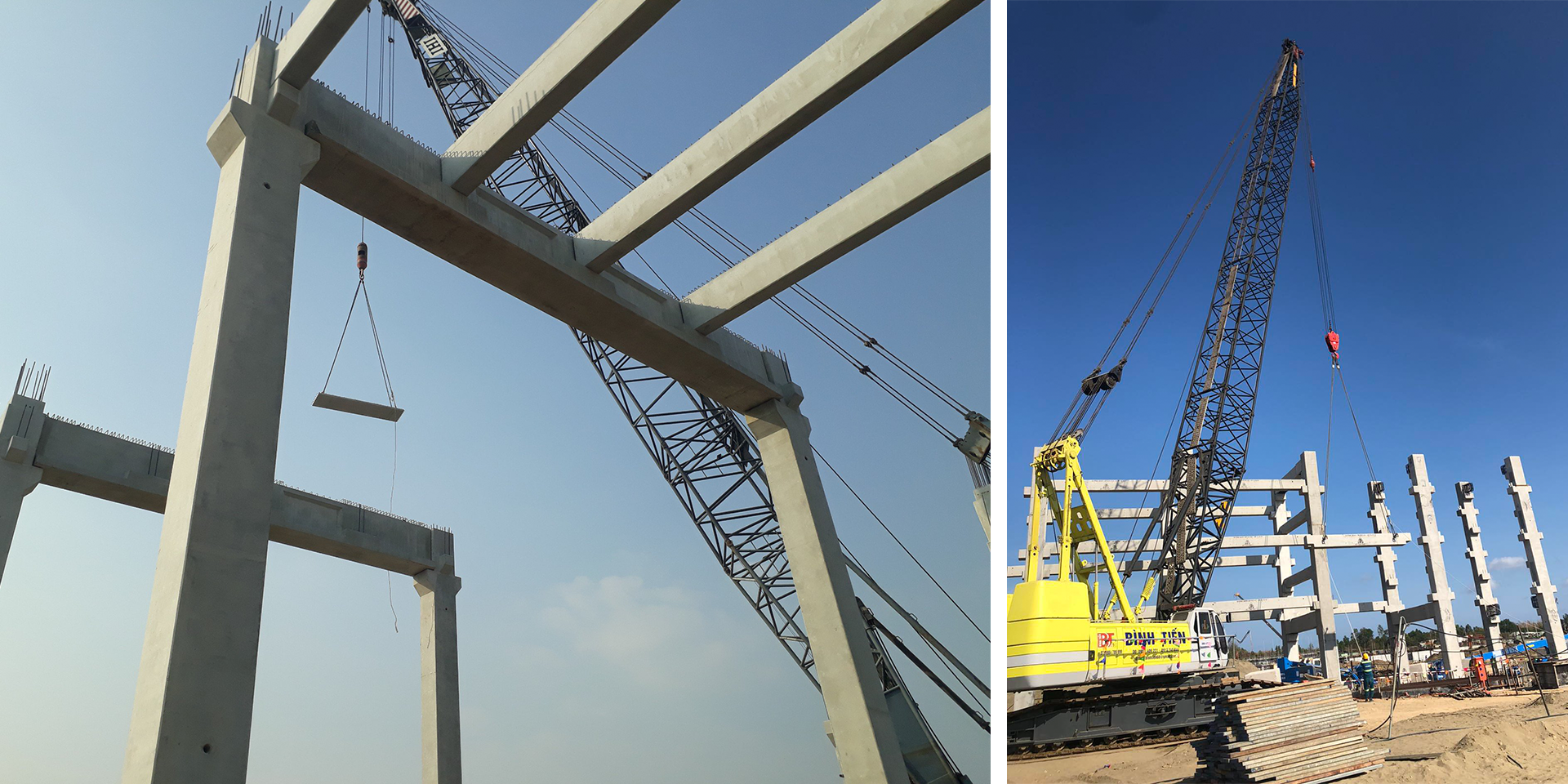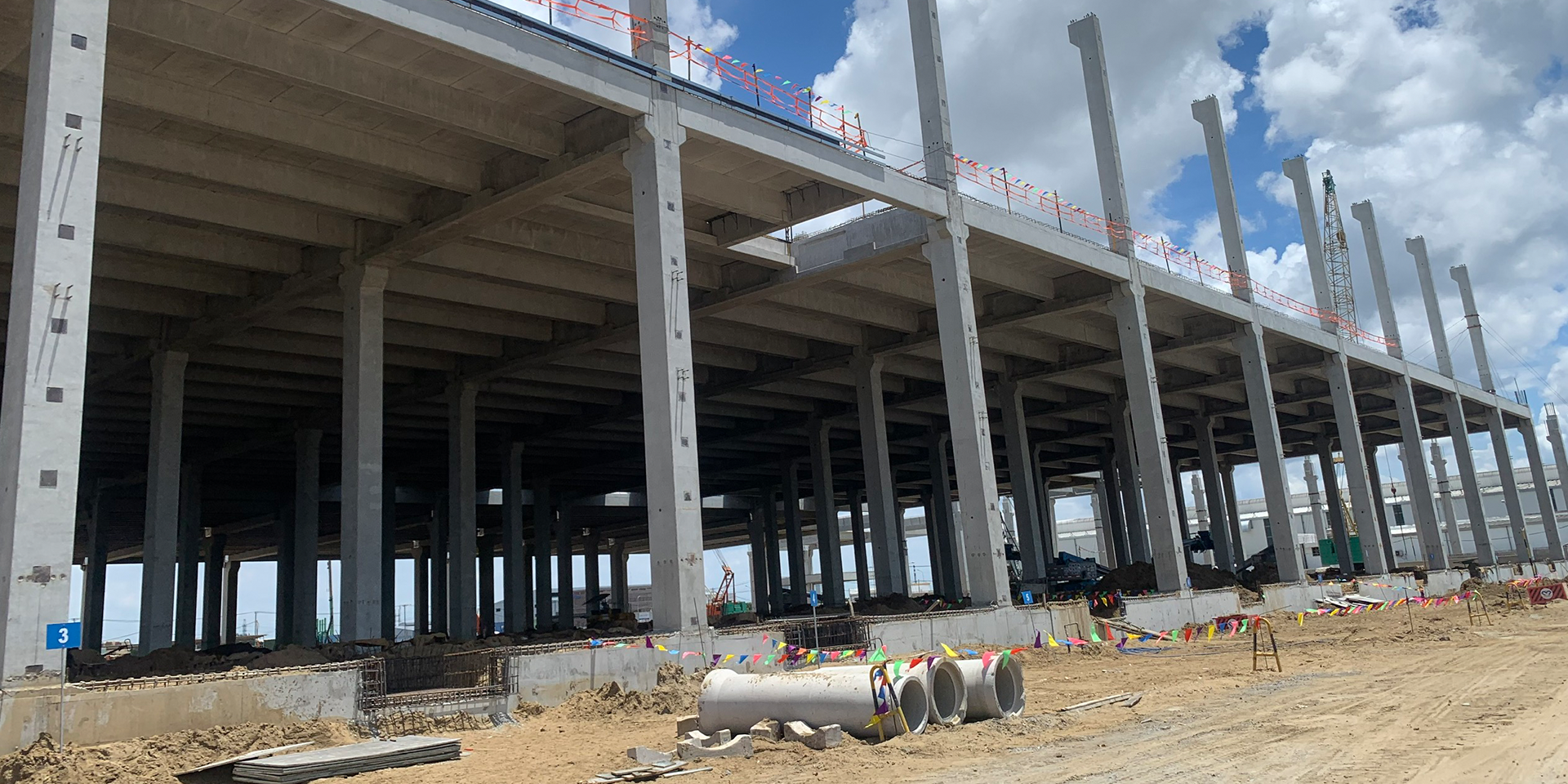Precast Design

What is Precast Concrete Technology?
Precast Concrete Technology (PCT) is a construction method that assembles precast concrete components into load-bearing structures of a project, connected with flexible joints (hinges/keys) or rigid joints (interlocks) with quality equivalent to the traditional cast-in-place concrete construction.
Precast components may include: isolated footings, beams, columns, staircases, floor panels, wall panels, trusses, pipe segments, and piles.
Current Construction Market Trends
Although precast construction technology has a long history worldwide, it is not widely adopted in Vietnam. The major advantage of this technology is industrialization in the construction industry and reduction in construction time.
Vietnam is a developing country with a high demand for basic construction and infrastructure. The application of precast concrete components will expedite the construction process, making it faster, more sustainable, cost-effective, requiring fewer labor resources, and minimizing environmental impact. This contributes to the development of the construction industry and makes our ecological environment greener, cleaner, and more sustainable.
Current Structural Engineering Solutions Requirements:
- Ensure sustainability for the structure during construction and in use.
- Ensure aesthetic appeal for components and connections.
- Easy and efficient construction assembly.
- Fast construction progress.
- High mechanization, reducing reliance on manual labor.
- Material efficiency, reducing construction investment costs.
- Keep up with current and future trends in the construction industry.


Advantages of the Prefabrication Project:
- Application of industrialization with high mechanization.
- Quality is well-controlled using specialized equipment and manufactured according to ISO procedures.
- Steel in the components is made from high-strength DYW steel cables with a tensile strength ranging from 17,700 kg/cm2 to 18,600 kg/cm2.
- High-grade concrete is used with strengths ranging from 450 to 600.
- High economic efficiency: Labor costs, steel content in concrete, material for mold boards, and scaffolding are significantly reduced.
- Shortened construction time: Components are mass-produced, reducing construction time compared to traditional cast-in-place methods. The high standardization of components, well-trained workers contribute to shortening the construction time and minimizing the impact of weather and climate.
- Environmentally friendly, waste during construction is controlled to the lowest level.
APS is proud to be a leading entity in this field, focusing on providing unique and flexible design solutions to help clients build outstanding spaces and products.
Why choose our modular design services?
1. Flexibility and Compatibility: We employ modular design technology to create flexible products and spaces with high compatibility, allowing clients to easily modify, expand, or upgrade according to practical needs.
2. Professional Architects and Engineers: With a team of professional architects and engineers, we are committed to delivering unique and high-quality design solutions while ensuring synchronization throughout the project implementation.
3. Time and Cost Savings: Our services are designed to minimize production time and costs through efficient assembly processes and material optimization.
4. Quality and Sustainability: Quality and sustainability are our top priorities. From material selection to the production process, we continuously strive to provide high-quality and environmentally sustainable products and services.
5. Professional Consultation Services: Our consulting team is ready to listen and accompany clients throughout the selection and design process, ensuring that all your requirements and desires are maximally met.

